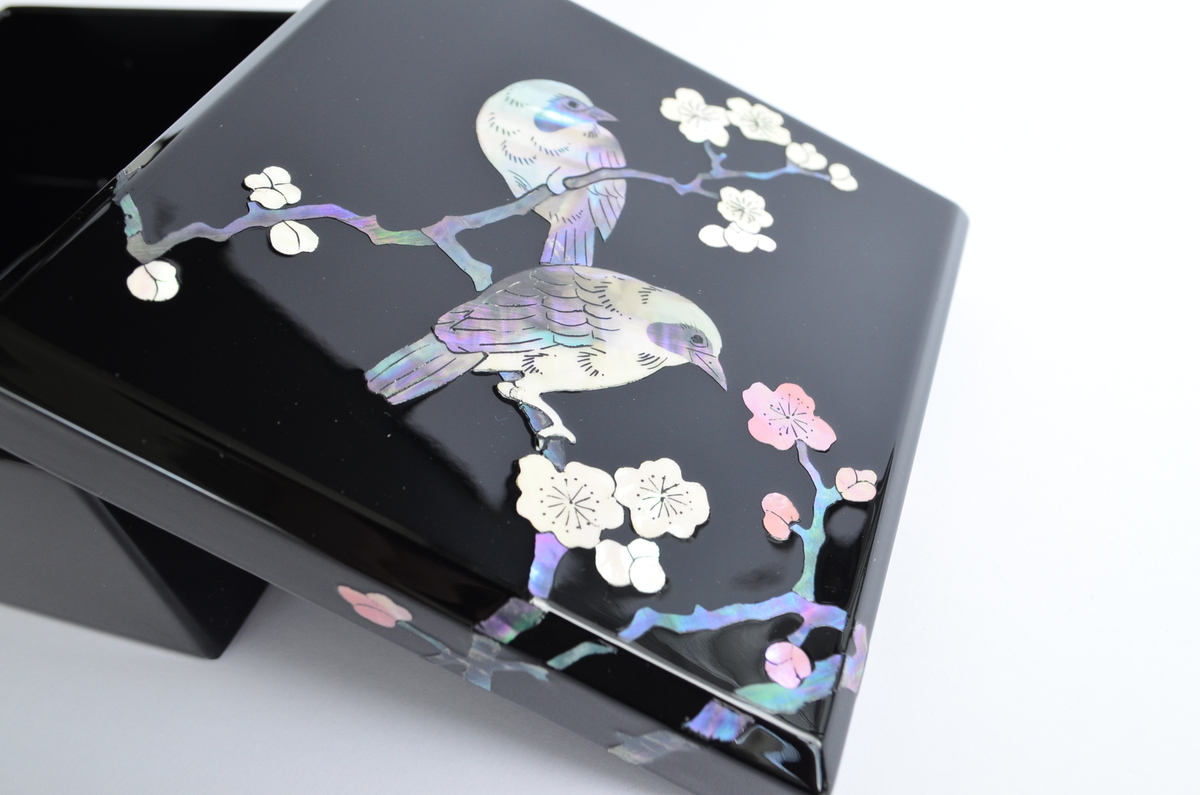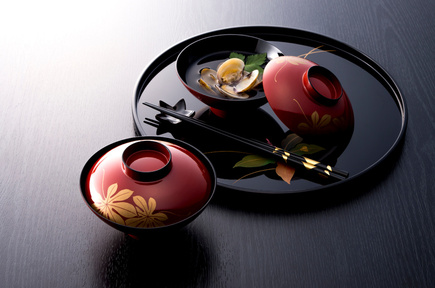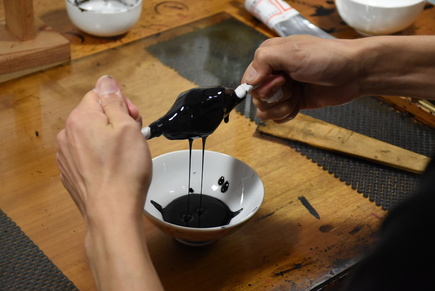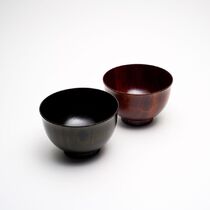Japanese Handicraft
Lacquerware

A Fusion of Elegance and Craftsmanship

Japanese lacquerware (shikki) is a centuries-old craft celebrated for its exquisite beauty, durability, and refined artistry. At Kyoto Handicraft Center, we offer an exceptional collection of authentic lacquerware, including pieces adorned with raden—a traditional decorative technique that inlays delicate mother-of-pearl into the lacquer surface.
The process of applying lacquer involves multiple layers of natural sap from the lacquer tree, carefully polished to achieve a deep, glossy finish. Raden adds an extraordinary dimension to this art, using thin slices of iridescent shell, meticulously shaped and embedded to create shimmering patterns that catch the light and evoke nature’s subtle beauty.

Our collection features bowls, trays, boxes, and tableware showcasing various regional styles and decorative techniques. The intricate maki-e designs—created with gold and silver powders—often combine beautifully with raden inlays to produce elegant, luminous compositions.
Beyond functionality, lacquerware with raden embodies a harmonious blend of nature, craftsmanship, and cultural symbolism. Whether gracing a formal tea ceremony or elevating everyday dining, these works bring timeless sophistication and serenity to your living space.
Discover Kyoto’s lacquerware tradition, where artistry and nature meet in perfect harmony.
Related Articles
"Traditional Japanese Shikki Lacquerware & Tableware Explained"

Discover the beauty and craftsmanship of Japanese lacquerware, its regional styles, and care tips for preserving these timeless traditional tableware pieces.
Learn More on the Blog
Learn More on the Blog
Related Articles
"The spread of mother-of-pearl inlay and lacquer in Japan"

The article “The Spread of Mother-of-Pearl Inlay and Lacquer in Japan” explores how the Japanese art of raden (mother-of-pearl inlay) developed not only from the country’s rich natural resources—such as wood and lacquer—but also from its unique lifestyle and aesthetics. It explains that Japan’s custom of holding dishes while eating, the use of tatami and low tables, and a refined sense of beauty nurtured the culture of wooden and lacquerware. Originating in ancient Egypt around 3000 BCE, the mother-of-pearl technique reached Japan through China in the Nara period and was later used for items such as horse fittings in the Kamakura era. Through this evolution, everyday wooden utensils gradually became objects of art.
Learn More on the Blog
Learn More on the Blog
Products
Clicking the link button will take you to our external e-commerce site.



